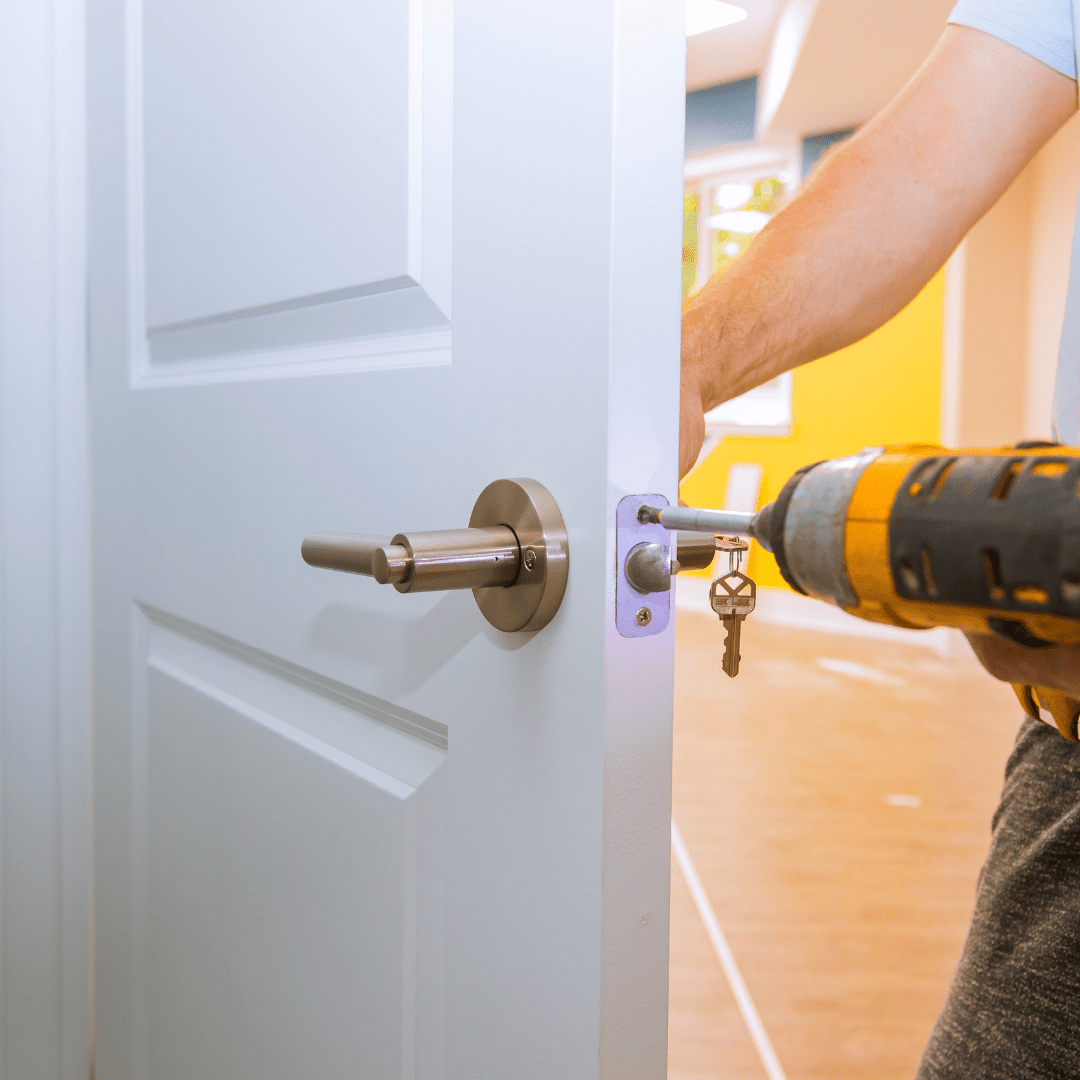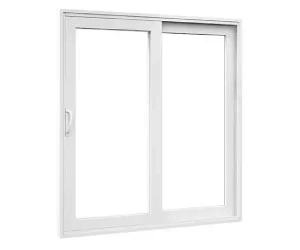Top mistakes to avoid during an entry door replacement project
Whatever You Need to Learn About Choosing the Perfect Door for Any Type Of Space
Selecting the excellent door for any kind of area needs careful consideration of numerous elements. Different door types serve distinctive objectives, while products can influence both toughness and visual appeals. Measurements play an important function in functionality. Safety features can not be ignored. As one browses the complexities of design and upkeep, the selections can feel frustrating. Recognizing these aspects is important for making an educated choice that balances functionality with style. What key elements will arise as many substantial?
Comprehending Different Door Kinds
When selecting a door, it is important to understand the numerous kinds available, as each offers a distinct objective and aesthetic. One of the most common types consist of hinged, moving, bi-fold, and pocket doors. Hinged doors, which swing open on a set of hinges, are functional and ideal for both exterior and interior use. Gliding doors, often used for patio areas, conserve room and use a seamless shift between indoors and outdoors. Bi-fold doors include multiple panels that fold to one side, making them excellent for wide openings and taking full advantage of all-natural light. Pocket doors slide into the wall surface, supplying a covert choice that is ideal for tiny spaces. Each door type not only adds to functionality however likewise improves the general design of an area, permitting homeowners to select a design that complements their personal taste and architectural vision. Comprehending these alternatives is essential for making an educated decision.
Discovering Materials and Their Advantages
Picking the best door material can noticeably influence both functionality and looks. Numerous materials supply distinctive benefits, making it crucial to examine the particular requirements of an area. Timber doors, for example, are treasured for their all-natural beauty and insulation buildings. They can be personalized to fit any kind of layout style, however need normal upkeep to stop bending and damages.
Metal doors, particularly steel, provide enhanced protection and resilience, making them perfect for exterior applications. They are immune to weather and bugs, however may do not have the warmth of timber. Fiberglass doors incorporate the finest of both worlds, offering longevity with the look of wood, while also being energy-efficient.
Glass doors can create a feeling of openness and permit natural light to stream right into an area. Nonetheless, they might need extra privacy remedies. Comprehending these materials allows notified decisions that align with both functional needs and visual choices.

Dimension Issues: Choosing the Right Capacities
When picking a door, understanding the ideal measurements is crucial. Common door sizes provide a beneficial starting factor, yet accurately gauging one's area guarantees an appropriate fit (doors supplier). Furthermore, considerations for customized measurements may occur, particularly in distinct building settings
Common Door Sizes
The dimensions of doors play an essential function in both functionality and looks within a space. Common door dimensions differ based on the kind of door and its desired use. The most common interior door dimensions are 24, 28, 30, 32, and 36 inches in size, with heights commonly at 80 inches. Exterior doors often tend to be broader, often gauging 36 inches, providing much easier accessibility. Furthermore, some conventional sizes may accommodate particular needs, such as double doors or pocket doors, which can enhance layout adaptability. It is essential to think about these common dimensions when choosing a door, as they ensure compatibility with existing structures and give a balanced visual impact, eventually adding to the overall style of the room.


Measuring Your Room
Precise measurements are vital for making certain that a new door fits seamlessly within a designated opening. To start, one need to gauge the width and elevation of the door framework, bearing in mind of any irregularities in the framework. It is suggested to gauge at numerous points to account for variations, specifically in older homes. The standard door size is commonly 30, 32, or 36 inches, while the height usually determines 80 inches; nonetheless, it is essential to verify these dimensions versus the particular opening. In addition, consider the swing instructions of the door and any prospective blockages in the surrounding location. Appropriate dimensions allow for a smoother installation process and boost the total capability of the door within the space.
Personalized Capacities Considerations
Customized measurements play a necessary function in making certain that a door not only fits flawlessly however likewise matches the total style of an area. door installation services. When picking a door, it is vital to consider the special measurements of the door structure, as well as any kind of building functions close by. Custom-sized doors permit for a seamless integration into various designs, whether traditional, contemporary, or rustic. Furthermore, they can improve functionality, supplying adequate clearance and availability. Property owners ought to also factor in the door's density and material, as these components can affect insulation and resilience. Eventually, buying custom-made dimensions brings about a tailored option that raises the aesthetic appeal and usefulness of any space, producing a natural environment
Enhancing Protection Includes
While home owners prioritize aesthetic appeal when picking a door, enhancing security features continues to be an important consideration. A well-chosen door not just matches the home's design yet additionally acts as a very first line of defense against breaches. The material plays a substantial role; strong wood or steel doors typically use premium strength contrasted to hollow-core choices.
Along with product, property owners need to think about the door's securing systems. Multi-point securing systems offer enhanced safety and security by engaging at several factors along the framework, making forced access harder. Reinforced frames and strike plates can even more bolster door security.
Additionally, the setup of clever locks provides ease and advanced protection attributes, such as remote surveillance and keyless entry. Property owners must likewise assess door limits and weather stripping, as more info here these can stop unapproved access and enhance power performance. Ultimately, integrating robust safety attributes guarantees comfort without compromising the door's overall functionality.
Visual Factors To Consider: Style and Design
A door's style and design considerably affect a home's general visual, as it serves as both an entrance and an Visit Website aesthetic prime focus. Choosing the ideal door entails reflecting on different design aspects that mirror the house owner's preference and the architectural style of the residential property. Contemporary homes might profit from smooth, minimal doors including glass panels, while traditional styles could welcome ornate wooden layouts with elaborate carvings.
Color and surface additionally play significant duties in improving aesthetic allure; strong colors can make a declaration, while soft tones frequently blend harmoniously with the surrounding environment. In addition, equipment selection-- such as manages and hinges-- must enhance the door's style to develop a cohesive look.
Inevitably, an attentively picked door not only improves visual charm however additionally sets the tone for the indoor space, making it necessary to review visual elements throughout the selection procedure.
Maintenance and Longevity Variables
When picking a door, maintenance and longevity are vital factors to consider that impact its lasting performance. An overview of product alternatives exposes differing levels of upkeep and resilience, while functional upkeep pointers can extend the door's lifespan. Furthermore, reviewing climate resistance is vital for guaranteeing that the door endures environmental aspects successfully.
Product Contrast Review
Picking the appropriate door product is important for property owners seeking toughness and reduced maintenance. Different materials provide distinct advantages. Steel doors, for instance, provide outstanding resistance to deterioration, making them suitable for high-traffic locations. Fiberglass doors are an additional solid option; they resist moisture and are much less susceptible to damages and scrapes. Timber doors, while aesthetically pleasing, call for even more maintenance as a result of vulnerability to warping and decay. Plastic doors provide an affordable remedy with minimal upkeep, though navigate to this website they might not use the same longevity as steel or fiberglass choices. Inevitably, the selection of material impacts not just the door's life expectancy but additionally the quantity of maintenance called for, affecting general house owner complete satisfaction.
Upkeep Tips for Longevity
Regular upkeep plays an essential function in extending the life expectancy of doors, no matter of the material chosen. Homeowners should routinely examine doors for any indicators of damage, such as fractures or warping. For wood doors, periodic sanding and refinishing can protect against degeneration and maintain aesthetic allure. Metal doors gain from a clean, rust-free surface area, which can be achieved with regular cleaning and the application of safety finishings. Joints and locks need lubrication to guarantee smooth operation, lowering deterioration. Additionally, ensuring that door structures are correctly lined up can prevent unnecessary tension on the door itself. By sticking to these maintenance techniques, individuals can substantially boost the toughness and performance of their doors, inevitably contributing to lasting value.
Climate Resistance Considerations
Although weather condition resistance is usually neglected, it is an essential aspect in the option and maintenance of doors. Appropriate weather-resistant doors can considerably boost a home's energy efficiency and protect against temperature, wind, and dampness changes. Materials such as fiberglass and steel provide exceptional resilience compared to timber, which might warp or rot gradually. In addition, the top quality of seals and weather stripping plays an important duty in protecting against drafts and water infiltration. Routine evaluations and maintenance can further extend a door's lifespan, ensuring it stays visually appealing and practical. Property owners must focus on climate resistance to reduce potential damages and lower lasting fixing expenses, eventually adding to a more lasting living atmosphere.
Frequently Asked Inquiries
Just how Do I Know if I Need a Custom-Sized Door?
To identify if a custom-sized door is needed, one need to determine the existing door frame and evaluate any kind of abnormalities or unique architectural attributes. If basic sizes do not fit, custom-made options end up being needed for correct installment.
What Are the Best Door Options for Soundproofing?
The finest door choices for soundproofing consist of strong timber doors, fiberglass doors with sound-dampening cores, and specially designed acoustic doors. These materials efficiently minimize sound transmission, improving personal privacy and convenience in numerous settings.
Can I Install a Door Myself, or Should I Work with a Professional?
If he has the essential skills and tools, he can install a door himself (doors supplier). Hiring a specialist might guarantee a higher quality setup, particularly for complicated or hefty doors calling for specific dimensions and positioning.
What Are the Average Prices Linked With Different Door Types?
Ordinary expenses for doors vary considerably; indoor doors vary from $50 to $500, exterior doors from $200 to $2,000, and specialized doors can surpass $5,000. Product, setup, and design influence total prices.
How Can I Boost Energy Efficiency With My Door Selection?
Selecting protected doors with climate stripping and energy-efficient glazing significantly enhances energy effectiveness. Additionally, selecting solid products over hollow options minimizes air leakage, adding to far better temperature law and lower power costs in any type of area.
Common door sizes differ based on the type of door and its desired use. When choosing a door, it is essential to take right into account the one-of-a-kind measurements of the door frame, as well as any type of building features close by. In addition, making sure that door frameworks are effectively aligned can avoid excessive stress on the door itself. The ideal door choices for soundproofing include strong wood doors, fiberglass doors with sound-dampening cores, and specially made acoustic doors. Ordinary expenses for doors vary significantly; interior doors range from $50 to $500, exterior doors from $200 to $2,000, and specialized doors can surpass $5,000.